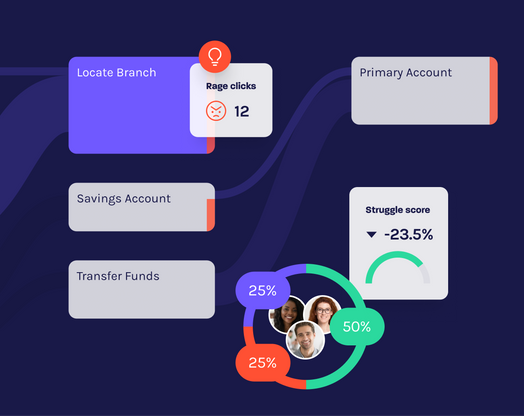
CMO perspectives: How digital marketers can thrive in an uncertain economy
With the rise of digital marketing, the role of the chief marketing officer (CMO) has become more crucial–and more challenging to navigate the fast-changing business landscape. We take a deeper look at how CMOs are leveraging the current marketing mix, AI’s influence, content trends (and much more), and how digital marketers can take advantage of these shifting tides.
Key takeaways
How to optimize dollars and resources for the modern marketing mix.
Where the opportunities are to best leverage AI for digital marketing efforts.
Which content strategies are proving to optimize the most conversions.
Why it’s better to focus on core metrics and ways to cut conversion costs.
There’s been a new level of uncertainty in the last 18 months. Digital marketing expectations are changing every day with the growing number of marketing solutions, and third-party data is phasing out while stringent data collection policies are on the rise. The “doing more with less” mantra remains strong.
In this blog, we take a deeper dive into how CMOs are thinking about what happens next and how to take advantage of new, transformative opportunities.
Adapting the marketing mix for the new era
When live events abruptly stopped during the COVID-19 pandemic, it had a massive impact. The good news is that traditional events are making a comeback but with some caveats. The cost of live events is now higher, so participating, sponsoring or any other investment is selective and needs to be profitable. This is compounded by the fact that staffing has shrunk, which adds more pressure to the equation.
On the other hand, paid advertising has remained constant, with some small cost fluctuations. HubSpot CMO Kip Bodner says even though core programmatic platforms are the standard, marketers should look beyond them for better potential investments.
Bodner’s team at Hubspot now works more frequently with YouTube and other content creators, affiliate owners and influencers.
The economics are better, and the quality is higher. It’s a less saturated market. Though more effort is needed to find and work with them, it provides a more integrated and personalized marketing experience.
Hubspot’s sweet spot tends to be influencers in the middle (100K to a million followers) who have a highly engaged, trusting audience open to messages relevant to them.
🔎Looking for more insights? Check out the on-demand webinar The Big Squeeze: How CMOs Drive Growth in an Uncertain Economy.
AI is front and center, with big potential
AI is on every marketer’s mind as it’s touching every part of the business and, in many cases, reimagining digital marketing of the future. The key is to not just understand what’s possible but gather, quantify and prioritize use cases for AI.
Hubspot has had a lot of success implementing AI for tech tickets chat, training its model on the HubSpot knowledge, especially for more complex interactions. Bodner said it resulted in a 100% improvement in customer satisfaction, given that customers generally don’t want to talk to a live person to get a problem solved.
Another area of impact is SEO, which plays a crucial role in achieving organic growth through content. However, as AI disrupts search algorithms more and more, the future of SEO may undergo changes that are still to be determined.
With AI-driven improvements, marketers will be able to allocate their resources more strategically and focus on channels that yield higher traffic and conversion rates.
My take is that the economics of the marketing mix are going to shift dramatically. My radical perspective is that artificial intelligence is the biggest boon to increasing conversion rates. So whether it be dynamic web content, ultra-personal outreach, whatever that may be, it is going to have a meaningfully positive impact on conversion rate.
Content is still king but with AI as its trusty assistant
Content is always going to be a foundational part of digital marketing, but how it's produced and distributed will evolve over time, particularly with AI.
AI tools can assist content marketers with research and provide rough outlines for content, but the nuanced nature of marketing and the need for personalized messaging make it challenging for AI to handle all aspects of content creation.
As former Glassbox CMO Asim Zaheer noted, “AI can save a content person a lot of time and help research and outline to get to the final work product, but it won’t get you there. It doesn’t eliminate the need for an editor or writer to refine and perfect it for the target audience.”
Though email campaigns remain a popular outreach method, SMS is how many people prefer to consume content. At Hubspot, for instance, Bodner says the company has had a lot of traction with WhatsApp for its global audience, getting better results than email, even though it has more technical requirements.
Short-form video is also expected to maintain its popularity. Video accessibility and the personality of people in the video are key to the future of content.
The future of personalization… is personal
“Personalization is the great fraud of marketing of the last century,” Bodner said. “Some things worked, but it was never this life-changing advantage. It didn’t double conversions. However, personalization has become the normal baseline expectation. It just hasn’t given us the huge business benefit we were promised.”
That could very well change with multimodal AI. For example, with AI models, you can build a 1/1 piece of video and content can be built at scale. “We can go from personalization to personal,” he said.
Marketing metrics: stick to the basics and be data-driven
What about metrics? Does all this talk of AI and future digital marketing change how we measure objectives and results? Not so much. While managing metrics and data is essential for any CMO, the critical thing is to identify the core metrics that truly matter. By focusing on measuring awareness, consideration, leads and monetization, marketers can gain a clear understanding of their performance and identify areas for improvement.
It’s also vital to have accurate and consolidated data to ensure the reliability of these metrics. While there are numerous additional analytics and areas to explore, these foundational metrics serve as the bedrock of your marketing strategy. As Bodner put it, “If your core metrics aren’t going well, you’re broken.”
Another aspect of metrics is taking a hard look at your programs. Instead of continuing with programs that are performing average, eliminate them and focus on the ones that are giving you the biggest bang for your buck. “Don’t do a few things mediocre, do a few things excellent,” Zaheer said. Bodner added that the shift to influencers has saved 50-70% on costs that are well spent.
Innovative strategies for growth
In an uncertain economy, CMOs face the challenge of navigating through evolving marketing strategies. The marketing mix continues to transform–with AI and automation playing pivotal roles. By harnessing these powerful tools, CMOs can drive growth and engage their target audiences most effectively. Bodner says both of these growth technologies are the new benchmark for digital marketing organizations–and that means being in the 25% of the adoption curve, not the laggard.
Zaheer also pointed out that AI and automation will be the biggest boon to conversion rates and meaningful impact on leads. He added that it’s the ultimate measuring stick to drive down customer acquisition costs, making it imperative for businesses to embrace these advancements to stay competitive.
This also means that to work most efficiently in this environment, CMOs must engage in rapid prioritization of AI and deprioritization where needed to take advantage of the opportunity. Zaheer noted, “Seeing what’s emerging and jumping on it faster than your competition.”
“It’s a great time to be a CMO,” Bodner said. The role of marketing is going to expand a lot in expertise on automation and AI, and teams are going to need different skill sets and scale up.
👀Watch the full thought-provoking on-demand webinar about driving growth in an uncertain economy.







